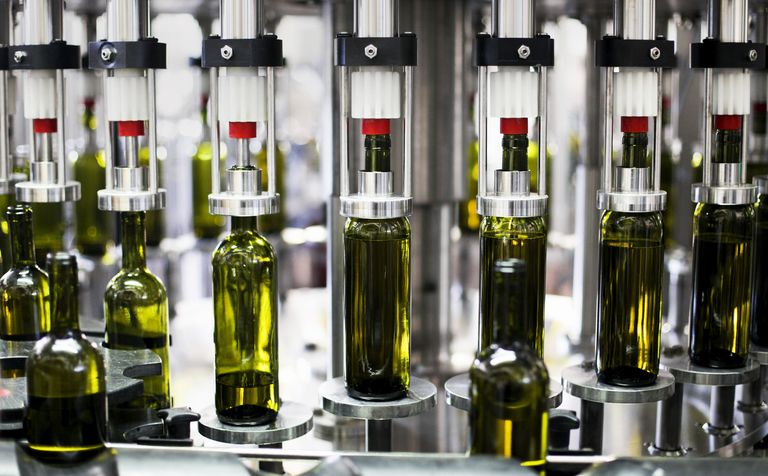Sarasota Insurance Agency >> blog

Product liability insurance protects a company against claims or suits arising from products a company has manufactured or sold. It covers a manufacturer's or seller's liability for bodily injury or property damage sustained by a third party due to a defect or malfunction of the product. The product may be virtually any type of goods sold to businesses or the public. Examples are machines, food, medicines and clothing.
The injured third party may be a buyer or user of the product, or even a bystander.
Types of Claims
Product liability claims are typically based on one of the following:
Manufacturing or Production Flaw The claimant alleges that some phase of the production process created a defect in the final product so that the product was unreasonably hazardous. For example, Steve purchases a table saw at a hardware store. Steve is injured when the blade guard flies off the saw. He sues the manufacturer, claiming that the guard was improperly installed when the saw was manufactured. The manufacturing flaw made the saw unreasonably dangerous.
Design Defect The claimant contends that the product's design is inherently unsafe. For example, Steve (in the previous example) sues the manufacturer on the basis that the saw was improperly designed. He contends that when the manufacture designed the saw, it failed to ensure that the guard would remain firmly in place.
Defective Warnings or Instructions The claimant alleges that the seller failed to provide adequate instructions on the proper use of the product, or that it failed to warn buyers of the product's risks. For example, Bill buys paint thinner at a home store. Bill becomes ill while using the product in a windowless room. He later sues the manufacturer for failing to warn him that paint thinner should not be used in an enclosed environment.
Strict Liability
A manufacturer or seller may be sued on the basis of strict liability, which is liability in the absence of negligence. Strict liability is not based on fault. An injured plaintiff may win a product liability suit against a manufacturer or seller by proving all of the following:
The product contained a defect that was dangerous
The product injured the plaintiff
The injury occurred when the plaintiff was using the product as it was intended to be used. For instance, the plaintiff was using a table saw to cut wood, not his hair.
No substantial changes were made to the product after it left the seller. For instance, the buyer didn't replace the blade guard with one he had made himself.
Courts began to apply the concept of strict liability to products in the 1960s and 1970s. They determined that the costs of injuries from defective products should be borne by the companies responsible for the defects, not by the injured users. They also reasoned that manufacturers put products into the marketplace, so they should bear the risks that the products are defective.
Product Sellers
While most product liability suits are filed against manufacturers, some are filed against product sellers.
Product sellers include retailers, wholesalers, distributors, and resellers. A seller may be held liable for an injury to a product buyer if the seller helped market the product to the consumer.
Whether a seller will be held strictly liable for product defects varies from state to state. Many states limit a seller's liability for product-related injuries unless the seller altered the product, was involved in its design, or knew it was defective. If a seller that is merely a "pass-through" distributor is sued for product liability, it can seek recovery for the costs of the suit from the manufacturer.
Damages
Plaintiffs in product liability suits may receive compensatory damages, including medical expenses, loss of income, and pain and suffering. They may also be awarded punitive damages and attorneys' fees.
In some cases, a group of product liability claims may be consolidated into a class action lawsuit. Such a suit may be feasible when all plaintiffs have suffered similar injuries from the same product.
Insurance Coverage
Product liability is covered under a general liability policy. It is covered in conjunction with liability for work you have completed. The combined coverage is called products-completed operations liability. This coverage is included in Coverage A, Bodily Injury, and Property Damage Liability.
Businesses that manufacture potentially hazardous products, such as pharmaceuticals or insecticides, may have difficulty obtaining product liability coverage from a standard insurer. Such businesses may need to purchase this coverage separately from a specialty insurer. A surplus lines broker can help locate insurers that offer this coverage.
The rate charged for product liability coverage depends on the nature of the product. Hazardous products are more expensive to insure than low-hazard products. Your insurer will categorize your business and assign an appropriate class code. Your product liability premium is calculated by multiplying the rate times your annual sales, and dividing the result by one thousand.
The premium you pay at the beginning of the policy period is usually based on your estimated sales. Your insurer will adjust your premium when it conducts an annual audit. If your actual sales are less than your projected sales, you may receive a return premium. If your actual sales exceed your estimated sales, you may be charged an additional premium. Note that under-reporting your sales at the beginning of your policy is not a good strategy for lowering your premium. This tactic may result in a substantial additional premium charge when your policy is audited.
Finally, product sellers may be afforded vendors coverage under the manufacturer's liability policy via an endorsement. The endorsement covers the seller as an additional insured. It protects the seller against suits that arise from defective products made by the manufacturer.
Article edited by Marianne Bonner
2017-08-07 12:06:38